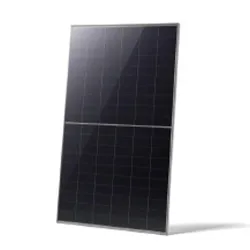Determining the Ideal Size of Solar Panels for Residential Use
Choosing the Right Solar Panel Size for Your House
Solar energy has emerged as one of the most promising renewable resources for sustainable living. For homeowners looking to transition to solar power, understanding solar panel sizes is crucial for maximizing efficiency and achieving energy independence. The size of the solar panels you choose will depend on several factors, including your energy needs, the space available, and local regulations.
Understanding Solar Panel Sizes
Solar panels come in various sizes, typically measured in terms of wattage. Most residential solar panels have a power output ranging from 250 to 400 watts per panel. Higher wattage means that the panel can generate more electricity, which is beneficial for homeowners with higher energy consumption.
The size of the solar panel not only affects its energy output but also the physical dimensions of the panel. Standard panels measure around 65 inches by 39 inches, while larger panels might measure up to 77 inches by 40 inches. Thus, the size of the panel will dictate how many panels are needed to meet your energy requirements.
Calculating Your Energy Needs
The first step in determining the size of the solar panels needed for your home is to assess your energy consumption
. To do this, gather your electricity bills for the past year and calculate your average monthly usage in kilowatt-hours (kWh).Once you have a clear understanding of your energy habits, you can estimate the number of panels required. For instance, if your home consumes an average of 900 kWh per month, this equates to roughly 30 kWh per day. Given that an average solar panel produces around 1 kWh per day (depending on sunlight availability), you might need around 30 panels to cover your entire energy demand.
Space Considerations
solar panel size for house

The amount of space available on your roof is another critical factor in determining the size of your solar panel system. Standard installation will require approximately 100 square feet of roof space for every 1 kW of solar panels. Therefore, if you aim to install a 6 kW solar system to meet your energy needs, you would require about 600 square feet of suitable roof space.
Assess the orientation, shading, and tilt of your roof, as these elements can affect how much sunlight your solar panels receive. Ideally, solar panels should face south for maximum exposure, but east or west-facing roofs can also be effective with proper installation.
Local Regulations and Incentives
Before committing to a solar panel system size, explore local regulations and incentives that may apply to your installation. Many municipalities have specific zoning laws, height restrictions, and aesthetic guidelines that could impact your installation. Furthermore, there might be local or state incentives that encourage the installation of renewable energy sources, which can affect your decision on how many panels to install.
Final Considerations
Finally, consider your long-term energy goals. While you may currently only need a specific number of panels, anticipating future needs can be crucial if you plan on adding to your family or investing in energy-intensive appliances. Additionally, as technology advances, there will likely be improvements in efficiency and energy storage in solar systems, which could influence your decision-making.
Conclusion
Choosing the right solar panel size for your house involves several calculations and considerations, including your energy needs, available space, and local regulations. It’s essential to take the time to evaluate your household’s energy consumption, the orientation of your roof, and any potential future changes in your energy usage. By doing so, you can build an efficient solar power system that meets your current needs while preparing you for a sustainable energy future. Investing in solar energy not only benefits you financially through reduced energy bills but also contributes positively to the environment. With careful planning and informed decisions, you can harness the power of solar energy and enjoy the many benefits it brings.
-
String Solar Inverter: The High-Efficiency Solution for Smart Solar EnergyNewsJul.14,2025
-
Revolutionizing Rooftop Energy with the Power of the Micro Solar InverterNewsJul.14,2025
-
Power Independence with Smart Off Grid Solar Inverter SolutionsNewsJul.14,2025
-
On Grid Solar Inverter: Powering the Future with Smart Grid IntegrationNewsJul.14,2025
-
Monocrystalline Solar Panels: High-Efficiency Power for the Future of Clean EnergyNewsJul.14,2025
-
Bifacial Solar Panel: A Smarter Investment for Next-Generation Energy SystemsNewsJul.14,2025







